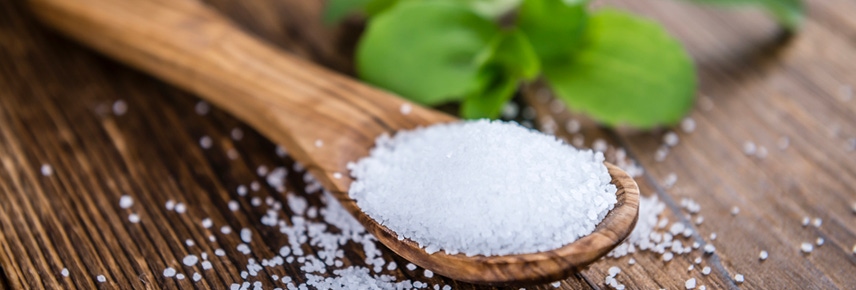
Food in focus: salt
It’s likely that you’ll find a stash of salt in almost any given kitchen. But what actually is salt and sodium for that matter? Do you need it? And are more ‘natural’ versions like pink Himalayan salt a healthier option?
What is salt?
Salt is a mineral made up of about 40% sodium and 60% chloride.
There are two methods to create salt – either by evaporating salt water, or by extracting solid salt from underground salt mines. It generally undergoes a refining process to remove impurities. In addition, anticaking agents may be added to salt to prevent it from absorbing moisture, and iodine is often added to help prevent iodine deficiency.
Are salt and sodium the same?
Sodium is a mineral that can occur naturally in foods such as celery, beets and even milk. It’s also a substance that is added to foods during manufacturing. That’s why when you look at an ingredient list or nutrition information panel, you’ll see sodium listed.
Salt is what we sprinkle on our food and as mentioned is a combination of sodium and chloride. 1000mg of sodium is the same as 2.5g of salt (half a teaspoon).
Do we need salt?
No, we don’t need salt, but we do need sodium, because our body can’t produce it. The sodium from salt performs essential functions including helping our bodies maintain fluid balance and helping with nerve function and muscle contraction (including our heart muscle and blood vessels). Although it is considered an essential nutrient, it’s important that we don’t have too much sodium or salt in our diet.
Why is salt bad for your heart?
We only need 1-2 grams of salt a day. Too much can lead to high blood pressure, a leading risk factor for heart disease.
There are also other health risks associated with consuming too much salt including kidney disease, stroke, oedema (fluid retention) and osteoporosis.
Is pink salt healthier?
In line with increasing warnings to lower our salt intakes, there has been an increase in popularity of pink salt and its supposed health benefits. However, pink salt, also known as Himalayan salt, may not live up to its healthy reputation.
Extracted from the Khewra Salt Mine near the Himalayas, pink salt has been touted as being healthier than plain white salt because it contains more essential minerals, including magnesium, potassium and calcium.
They help give the salt its peachy colour. However, there’s little research surrounding pink salt, so any health claims should be taken with a grain of salt (excuse the pun). What we do know is that the mineral content of pink salt is so small that you would need to eat an impossibly large quantity (more than 500% the recommended sodium limit) to gain any real health benefits.
As pink salt is hand-extracted and minimally processed to yield an end product free from additives, it’s generally considered to be much more natural than table salt.
Although, while it might contain less additives, so too do other types of sea salt. It’s also important to remember that all salt – including pink, rock and sea salt – contain the same amount of sodium, so you’re not doing yourself any favours choosing pink or any other type of salt if you’re watching your sodium intake.
More worryingly, recent findings by Nutrition Research Australia discovered that pink salt can also contain higher levels of heavy metals than regular salt.
What’s the right amount of salt?
It’s important to not eat too much salt, as too much sodium can negatively impact your health.
The Heart Foundation recommends eating no more than 5 grams of salt a day (2000mg sodium) – about one teaspoon. This includes both the salt you add at the table as well as the salt added to many pre-packaged foods.
The Dietary Guidelines for Australian Adults recommend choosing foods low in salt.
The total sodium content of packaged foods must be declared on food labels, so it’s relatively easy to keep track of how much salt you’re eating – look at the “per 100g” column on food labels when comparing products. Low salt foods contain fewer than 120mg of sodium per 100g.
Shake it off
Our top 5 ways to cut the salt:
- Eat mostly fresh fruit and vegetables
- Rather than adding salt for flavour, use herbs and spices
- Instead of adding flavour with high sodium store-bought condiments try using fresh garlic, chili or a squeeze of lemon
- Look for food labels that say “low salt” “salt reduced” and “no added salt”
- If using canned beans or chickpeas, rinse under water before using

The latest nutrition advice, plus health and wellness tips delivered to your inbox monthly
